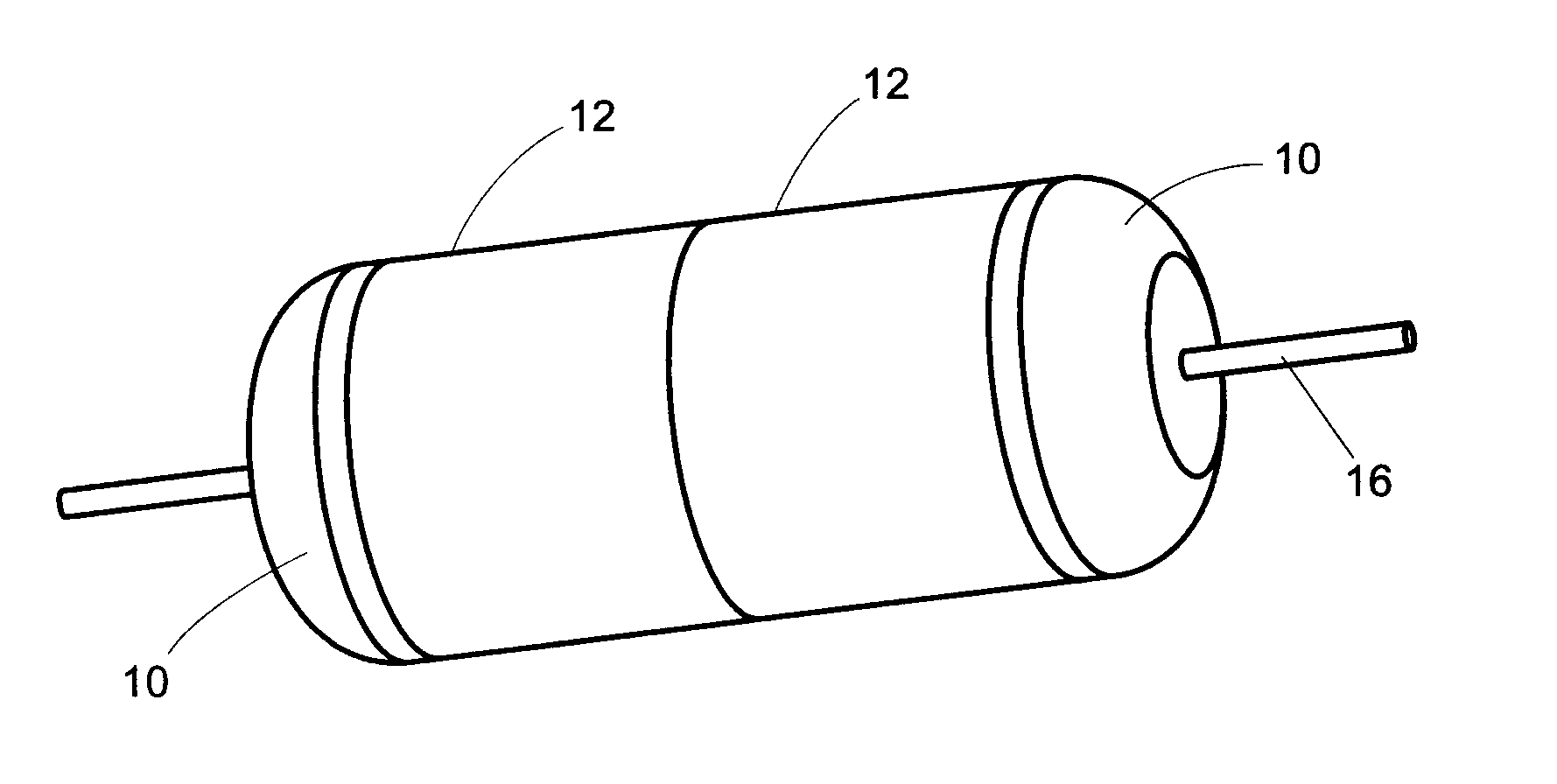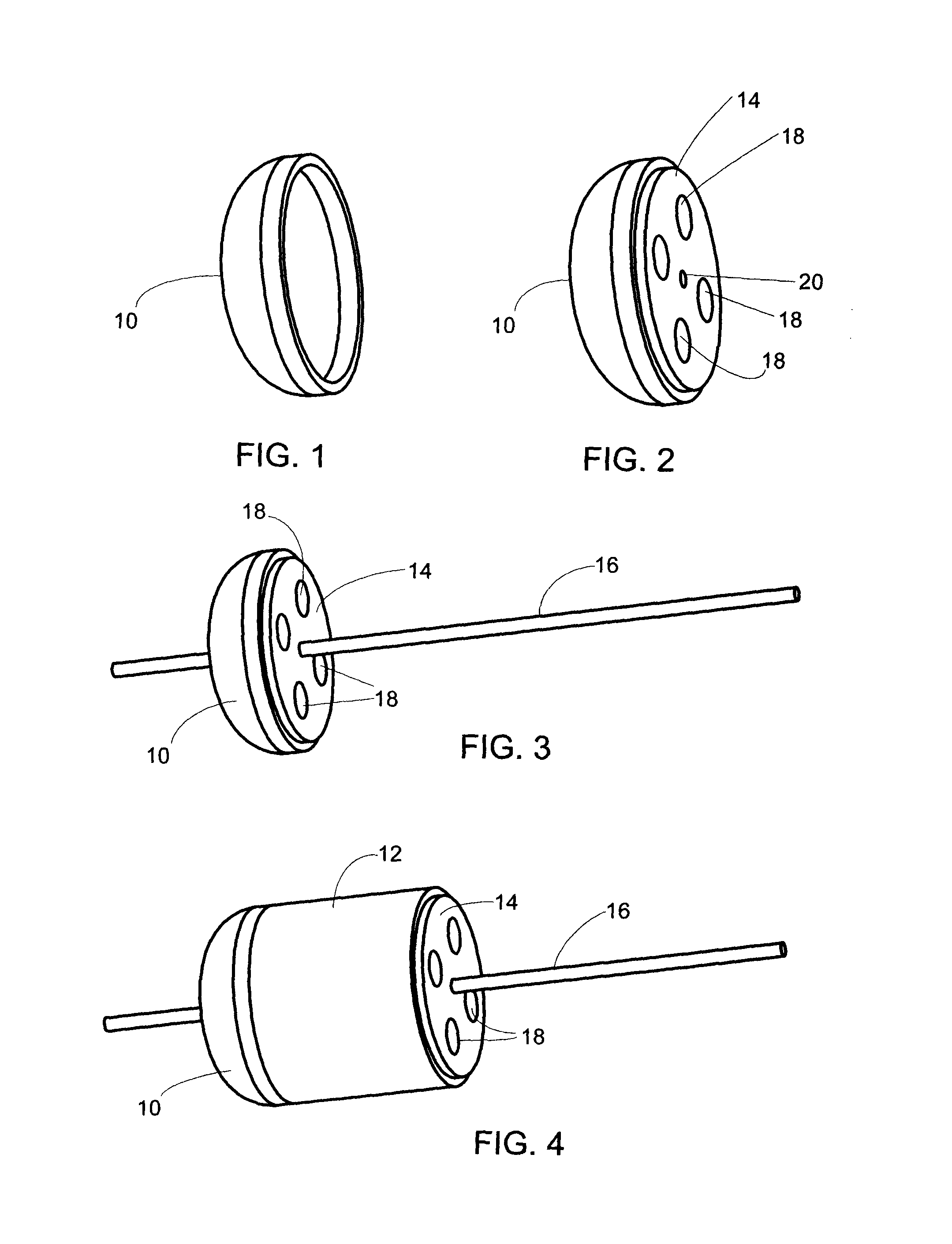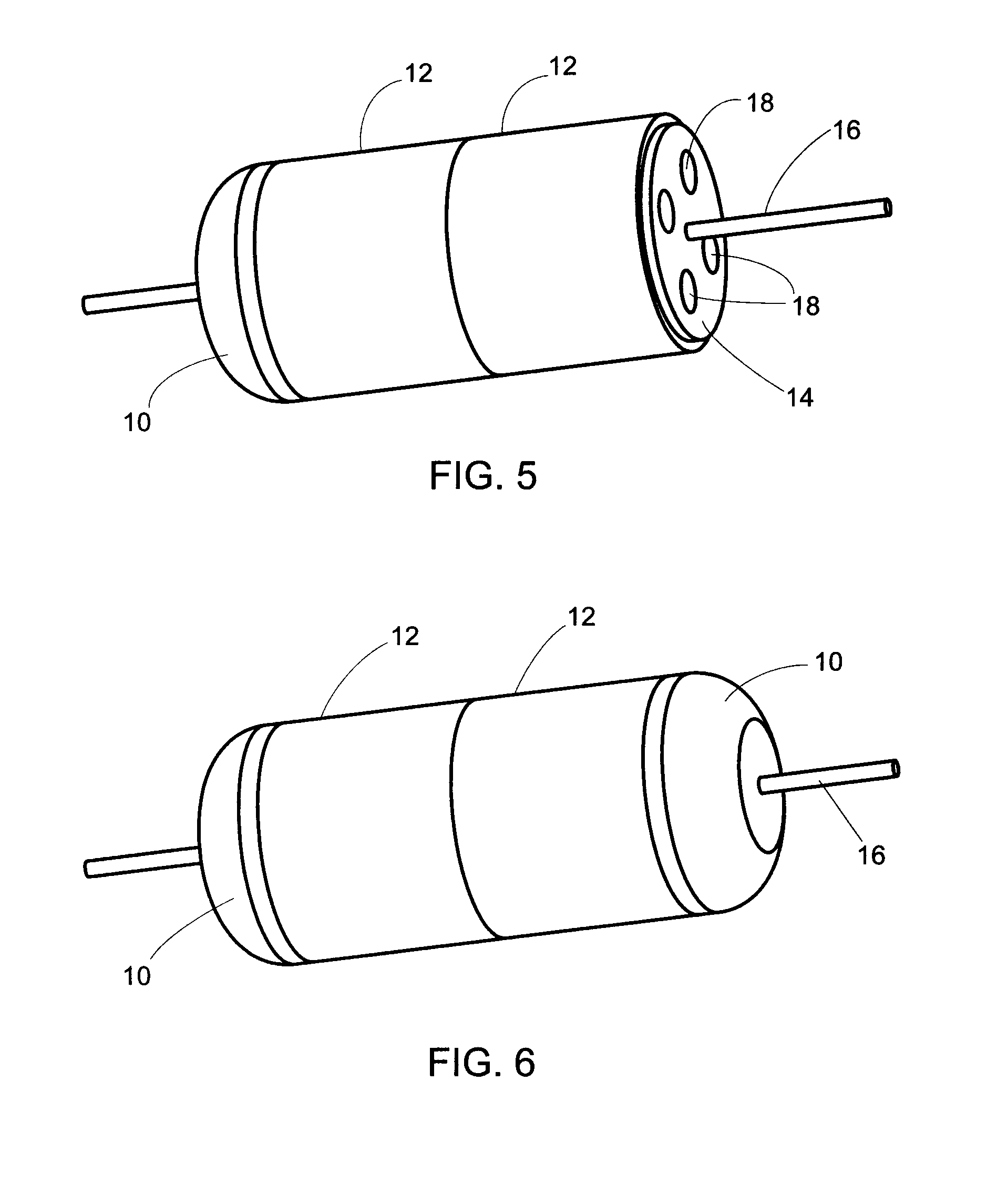Techniques for making pressure vessels as unitary structures of composite materials
a composite material and pressure vessel technology, applied in the direction of screw threaded joints, mechanical equipment, other domestic objects, etc., can solve the problems of increasing the overall weight of the pressure vessel, reducing the thermal expansion coefficient of common composite materials such as carbon composite materials, and significant drawbacks
- Summary
- Abstract
- Description
- Claims
- Application Information
AI Technical Summary
Benefits of technology
Problems solved by technology
Method used
Image
Examples
Embodiment Construction
[0041]As shown in the drawings, the present invention encompasses a method, and more particularly several sub-methods, for making pressure vessels from composite materials, such that the use of metals is minimized or totally eliminated. The use of metals not only adds unwanted weight to a pressure vessel but also increases the risk of defects or failures due to the difference in the coefficients of thermal expansion of composites on one hand and common metals on the other. Although weight reduction of pressure vessels has long been a goal in the aerospace industry, prior to this invention no-one has been able to apply the composite over-wrapped pressure vessel (COPV) manufacturing technique to large vessels without metal liners. Similarly, the integration of threaded coupling bosses and longitudinal and circumferential stringers to composite pressure vessels has also proved to an elusive goal.
[0042]In accordance with the present invention, large pressure vessels can be formed using ...
PUM
| Property | Measurement | Unit |
|---|---|---|
| temperature | aaaaa | aaaaa |
| size | aaaaa | aaaaa |
| physical properties | aaaaa | aaaaa |
Abstract
Description
Claims
Application Information
 Login to View More
Login to View More - R&D
- Intellectual Property
- Life Sciences
- Materials
- Tech Scout
- Unparalleled Data Quality
- Higher Quality Content
- 60% Fewer Hallucinations
Browse by: Latest US Patents, China's latest patents, Technical Efficacy Thesaurus, Application Domain, Technology Topic, Popular Technical Reports.
© 2025 PatSnap. All rights reserved.Legal|Privacy policy|Modern Slavery Act Transparency Statement|Sitemap|About US| Contact US: help@patsnap.com



